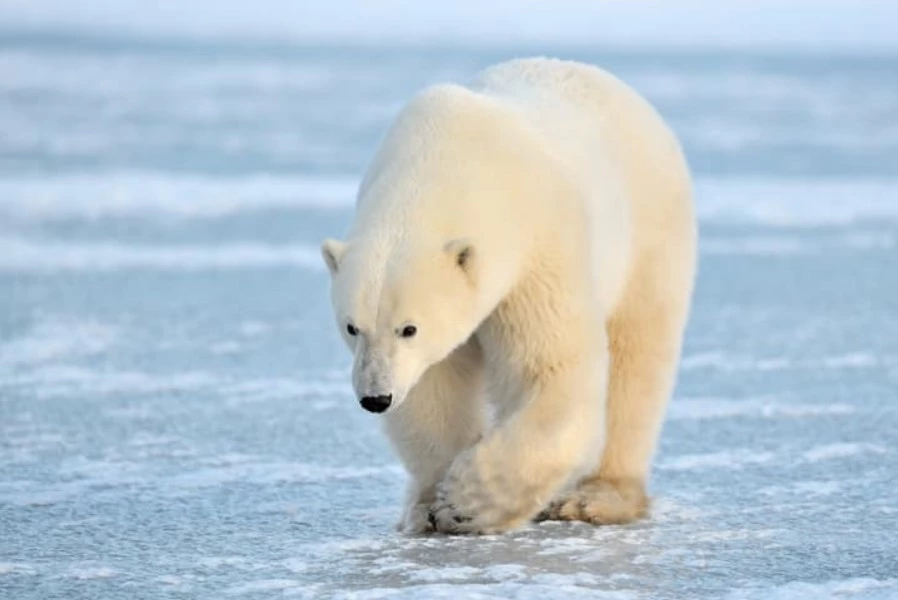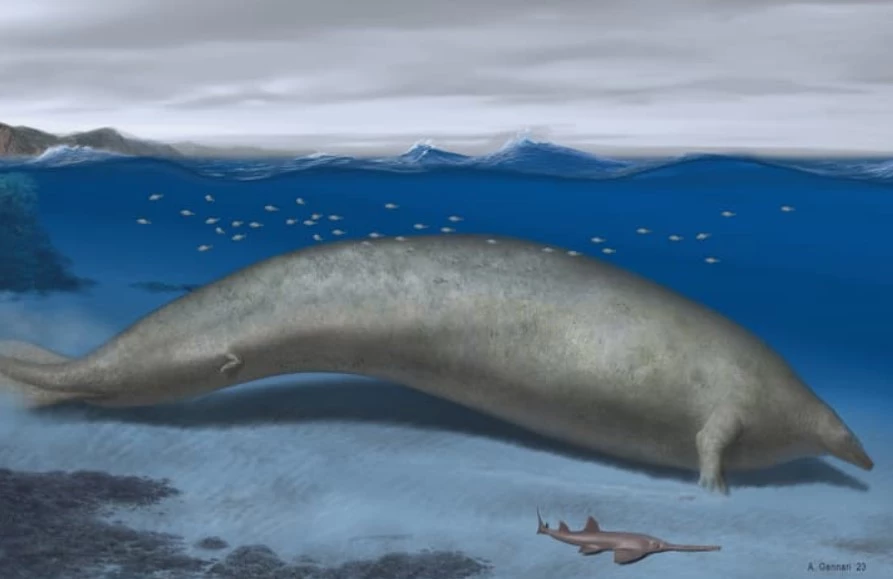With 2023 drawing to a close, it's once again time to look at the significant, intriguing, and sometimes just plain daft science stories of the year. So, let's dive in and see what the science types have been up to.
Dodo next in line for de-extinction by scientists reviving the mammoth

Dead as a dodo ranks pretty high on the cliché list, but it's also one that might not be true for much longer. We reported in January that Colossal Bioscience, which is also working on bringing back the woolly mammoth, also hopes to de-extinct the extinct dodo.
Polar bear's light-funneling fur key to new super-warm textile

Getting away from avian revivals, scientists in April revealed that the hollow fibers that make up polar bear fur act as light funnels from the top of the fur down to the bear's black skin, warming them up even in really chilly Arctic conditions.
Latest Kevlar EXO fabric is lighter, more flexible and bulletproof

Also in April, DuPont unveiled its Kevlar EXO fabric, which it claims is not only lighter and more flexible than previous versions, but is also more bulletproof, heat resistant, and cooler to wear. It also fits a bit better because ballistic protection shouldn't mean unfashionable.
Bizarre 460-foot "battery tanker" set to ship electrons by 2026

Another 2023 innovation came from a Japanese company called PowerX, which announced that it's building a 140-meter (460-ft) ship. That may not seem exciting, but when that ship is a floating electric power bank charged with 241 megawatt-hours of renewable energy for delivery to coastal customers, that's a different story.
World-first space solar demonstration beams power from orbit to Earth

Not to be outdone and not wanting their power delivered by boat, a team from Caltech's Space Solar Power Project demonstrated that it was possible to convert electric power to microwaves in orbit and beam it to Earth at detectable levels, which might one day open the way for orbital solar power stations.
World's largest wind turbine is now fully operational and connected

In July, records were broken as China's Three Gorges Energy hooked up the world's first 16-megawatt monster offshore wind turbine to the national power grid, allowing the 260-meter (853-ft) behemoth to supply enough energy for 36,000 Chinese homes.
Bizarre new high-strength glue can stick and unstick on command

Going from the gigantic to the sticky, scientists at Japan’s National Institute for Materials Science have come up with a super-strong adhesive that's reversible. When you want it to stick, shine UV light of a specific frequency on it. To unstick it, shine UV light of a different frequency. Simple.
Colossal new species may be the largest animal that ever existed

If this prehistoric relative of today's whales looks a tad tubby, it's entitled. From the few remains found, paleontologists suggest that it may be the biggest animal ever seen on Earth, clocking in at 340 tonnes and putting the blue whale's 200 tonnes to shame.
First RNA extracted from extinct species may help thylacine resurrection

It's not just dodos looking for a comeback. The extinct thylacine, also known as the Tasmanian tiger, might show up again as well thanks to scientists in Sweden, who extracted RNA from a thylacine specimen preserved in a museum collection for 130 years, providing a more complete genetic portrait of the marsupial predator.
"Modified gravity" could rule out both dark matter and Planet Nine

One ongoing theme of 2023 is that space scientists keep finding all sorts of anomalies from oddly distributed galaxies to head-scratching disturbances in the planets of our solar system, which are not only causing physicists to lose sleep, but to also question some pretty basic models of how the universe works.
Bizarre new electronic state discovered in five-layer graphene

As if it can't do enough already, an MIT team has found that graphene exhibits a new electronic state thanks to its multiferroic behavior when it's stacked up in layers of five in a special way. And has the potential to effectively double the data storage capacity of a chip thanks to “ferro-valleytricity.”
World's most water-repellent surface surprises its own inventors

From Aalto University in Finland comes a water-repellent surface made from self-assembled monolayers coating a silicon substrate. Translated, that means that it's so hydrophobic that not only does water slide off even when the surface is almost dead level, it's so slippery that it won't even bead on it.
Who you callin' bird-brained? Pigeons learn the same way AI models do

Pigeons may not have a reputation for being the sharpest knives in the drawer, but Ohio State University has found that when taught various tasks, the feathered pupils processed the information in ways that are very similar to modern machine learning.
Self-healing concrete patches up cracks with dormant bacteria

In November, we learned Drexel University scientists have come up with a curious self-healing concrete. It doesn't quite do it by itself, though. It gets a bit of help from the "BioFibers" embedded in the concrete that are coated with bacterial endospores that revive when cracks let water into the material, letting them grow and form a seal.
This sea worm's butt detaches from its body to swim off in search of love

Going from concrete to sea life, November also saw the discovery of a sea worm that has a novel means of reproduction. Instead of seeking a mate, it detaches its fertile butt and lets it go off and conduct the courtship on its own.
Ultra-compact particle accelerator does a mile's work with four inches

If miniaturization is your thing, how about a particle accelerator from Tau Systems that can crank out a hefty 10 billion electron-volt particle beam? Not impressed? What if we tell you that it isn't 1.9 miles long like current designs, but just 10 cm? Now that's compact.
World's largest tokamak fusion reactor powers up

In December, the EU/Japanese 370-tonne JT-60SA, the world's largest tokamak fusion reactor, was fully switched on. It won't be feeding power to our homes, but it will help to answer many of the questions that may lead to practical commercial reactors in the near future.
Diamond data storage breakthrough writes and rewrites down to single atom

They say diamonds are forever and now that may apply to their ability to store information as scientists come up with a way to etch data onto diamonds in different colors, allowing them to store the equivalent of a billion Blu-Ray discs on a two-inch wafer.
Electrified cloth extracts uranium from seawater

And last but not least, China's Northeast Normal University has come up with a new polymer cloth that, when an electric current is applied, it can extract uranium from ordinary sea water. If it scales up, it might be able to provide humanity with an unlimited supply of nuclear fuel.





